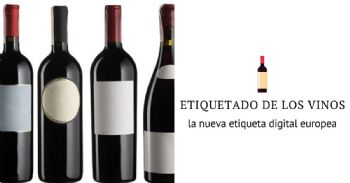
New rules for wine labelling: the European digital label
From 8 December 2023 it will be mandatory to indicate on the label the list of ingredients and the nutritional declaration of wines according to Regulation (EU) 2021/2117 published on 2 December 2021 amending the rules for the labelling of wines and aromatized wines.
It shall be possible to provide this information, only under certain conditions, by means of an electronic label or e-label. However, the presence of allergenic substances and the energy value of 100ml of wine or aromatised wine must be indicated on the physical label.
The Regulation provides for a transitional period of two years. All wines produced and labelled after 8 December 2023 must include the indication of the list of ingredients and nutritional information.
A recent note published on the IFV website presents a summary of the additives used in the oenological sector subject to this regulation.
According to Regulation (EU) No 1169/2011 on Food Information provided to the consumer, the definition of ingredient is as follows: any substance or product, including flavourings, food additives and food enzymes, or any component of a compound ingredient, used in the manufacture or preparation of a foodstuff and still present in the finished product, possibly in a modified form; the residues are not considered ingredients.
Regulation (EU) 2019/934 of 12 March 2019 lists the authorised oenological practices and their classification as additives or processing aids. Only additives are subject to labelling.
Which additives are subject to labelling?
Regulation (EU) 2019/934 classifies the following substances as additives:
- Acidity correctors: tartaric acid, malic acid*, lactic acid, calcium sulfate, citric acid.
- Preservatives and antioxidants: sulphur dioxide, potassium bisulphite, potassium metabisulphite, potassium sorbate*, lysozyme*, ascorbic acid, dimethyl dicarbonate (DMDC)*.
- Stabilizers: citric acid, metatartaric acid, gum Arabic, yeast mannoproteins, carboxymethylcellulose (CMC)*, potassium polyaspartate*, fumaric acid*.
- Packaging gases and gases: argon, nitrogen, carbon dioxide.
- Other practices: Carrasco pine resin, caramel*.
- Additives with the words * are not authorised in Organic.
Physical alternatives:
- acidity correctors: cationic resins*, electromembrane treatments*
- to preservatives and antioxidants: flash pasteurization, tangential microfiltration, heating. (pulsed electric fields (PEF) and UV-C, techniques not yet authorised)
- stabilisers: electrodialysis*, cationic resins*, cold stabilisation with or without potassium bitartrate*
- Preventive oenological practices including biosecurity.
Evaluation table of oenological practices
The IFV also offers a free online tool, which includes all the oenological practices, their characteristics, uses and regulations.
This tool also provides information on labeling. See tool
U-Label platform dedicated to electronic labeling
Faced with these new labelling requirements, European sectoral organisations have worked to design a collective platform that allows companies to comply with the new legislation and respond to consumers’ needs for information and transparency.
The European Committee of Wine Companies (CEEV) and spiritsEUROPE have developed an electronic platform www.u-label.com
The platform was launched in December 2021 and allows to create product sheets with information according to legislative requirements, automatically translate regulatory information (such as ingredient listing, nutrition information, responsible consumption guidelines and sustainability information) to the 24 official languages of the European Union and publish everything on an electronic label. A QR code must be printed on the back label of the product.
By scanning the label’s QR code, consumers can access the information included in the electronic label in the language of their choice.
As of December 1, 2021, the U-Label’ platform is available to the entire industry and companies can register and start creating their digital labels.
SOURCE: INFOWINE.COM
